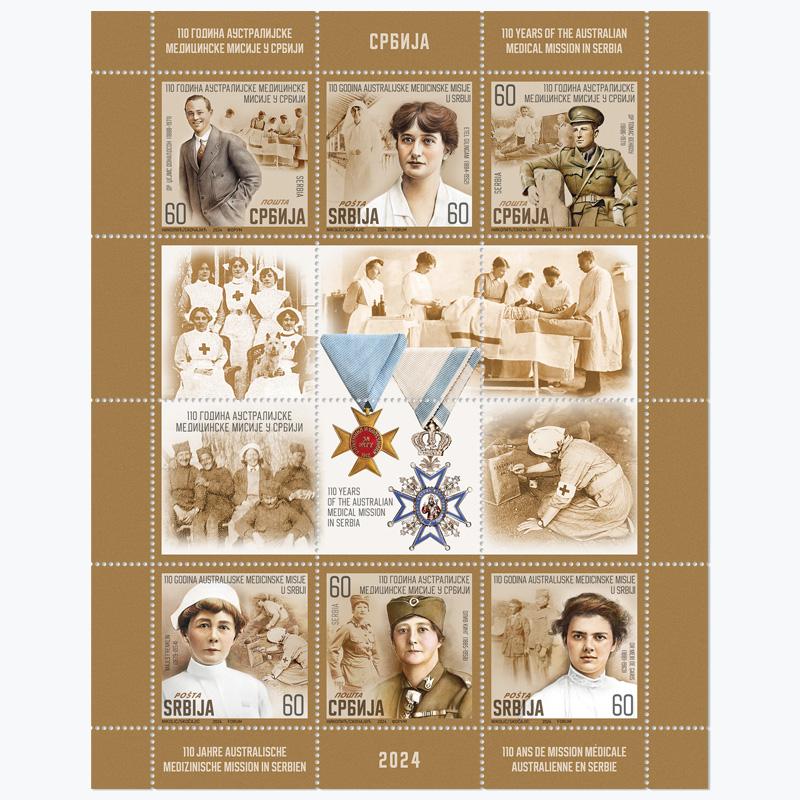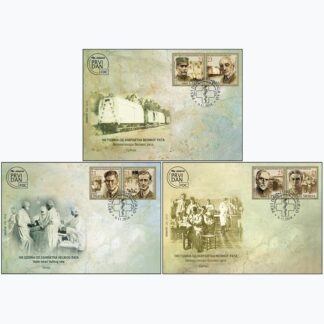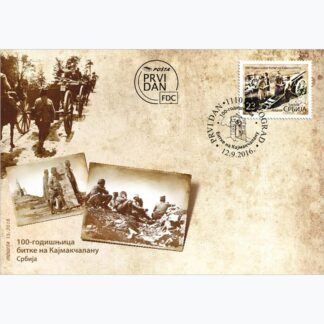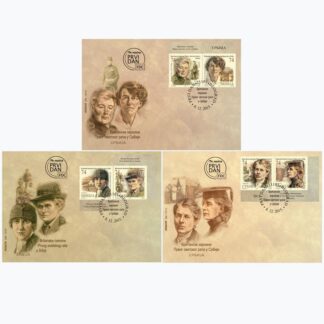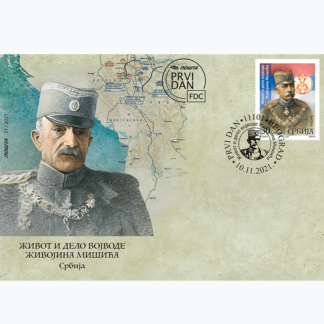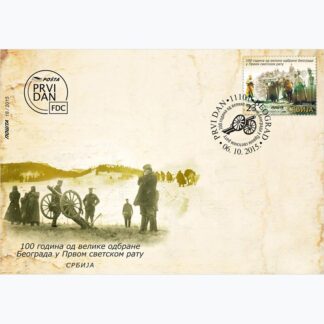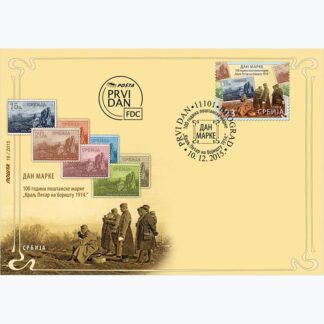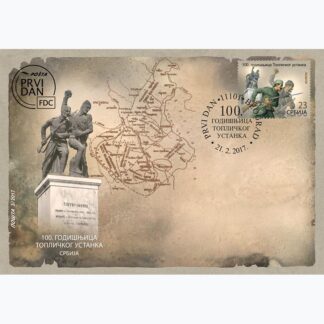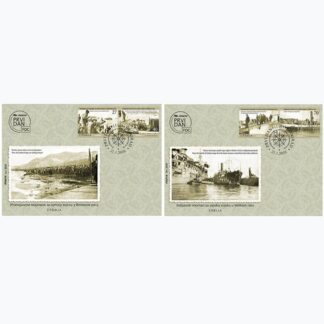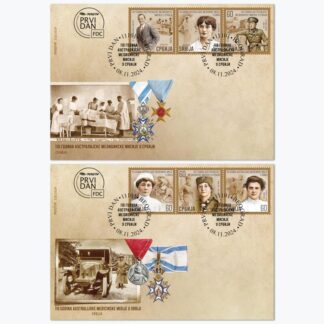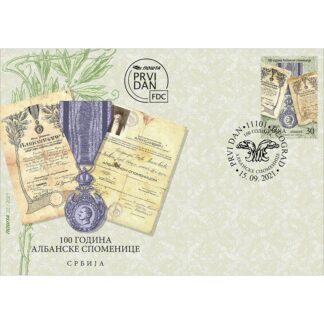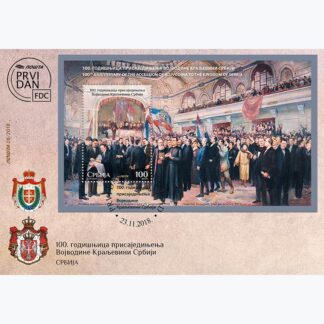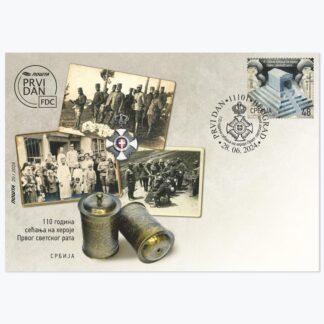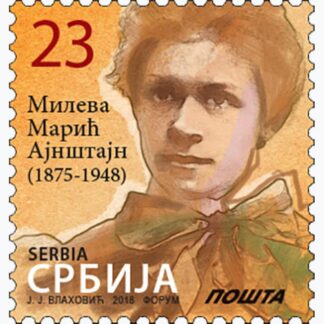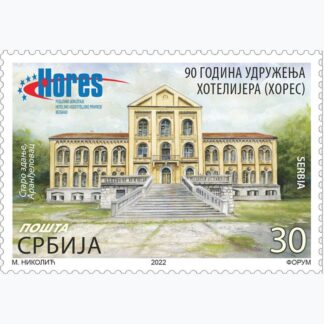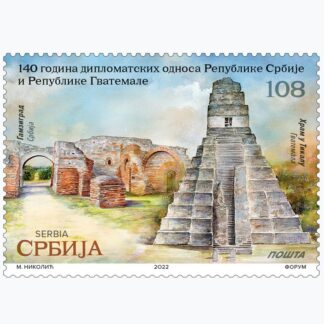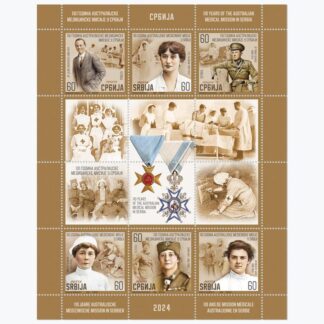Description
When the brave, small European Kingdom of Serbia was dragged into the whirlwind of the First World War, the word about the heroism and chivalry of its soldier–farmers quickly spread throughout the free world after the first victories in the battles of Cer and Kolubara. Volunteers from all over rushed to help the brave Serbian soldiers and the Serbian people. Among the first were volunteers from Australia, who treated wounded and sick soldiers and civilians as part of medical and Red Cross missions.
Donaldson, James Blair (1888–1971) came to Serbia in 1915 as a member of the Allies War Relief organisation. In the hospital in Kragujevac, he was in charge of an X-ray unit. Later, he served in the French Army field hospital, Hospital d’Evacuation, No. 2, on the Greek border, where he also performed surgical procedures. He studied medicine at the University of Melbourne, and graduated from the University of Edinburgh in 1913. In the years after World War I, he returned to Australia with his wife and son, where he worked as a medical doctor.
Gillingham, Ethel May (1884–1952) came to Serbia with the Second British Red Cross Serbian Mission and, as a volunteer nursing sister, she served in Vrnjačka Banja from May 1915 to October 1915. She was detained during the Austro-Hungarian occupation offensive on Serbia, but was set free in February 1916, so she continued her mission as a nursing sister in Egypt, where, during her service in Cairo, she met Captain Richard Evans, who served on the Salonika front in 1917, and became engaged to him. After the war, Ethel and Richard married and had three children.
Benbow, Thomas Alexander Palmer (1886–1971) came to Serbia in November 1914 with the British Red Cross Number One Unit and with a valedictorian degree of the Jefferson College of Medicine in Philadelphia. Until June 1915, he worked in the Serbian Fourth Reserve Hospital in Skopje, treating the wounded and those sick with typhus, which he himself contracted during his service. He was awarded the Order of Saint Sava, Class IV. After the war, he returned to Australia where he establsihed a medical practice.
Franklin, Stella Maria Sarah Miles (1879–1954) voluntarily joined the Scottish Women's Hospitals in 1917 and reported for service at the «America» hospital near Ostrovo, performing the duties of hospital cook and taking care of the warehouse. She described her wartime experiences in the memoir «Ne mari ništa: Six months with the Serbs» and in the play «By far Kajmacktchalan: A Play of the Balkan Front Today». Due to impaired health, she retired from the front at the beginning of 1918.
King, Olive May Kelso (1885–1958) The Great War found her in England, where she immediately volunteered for war service. She came to Serbia in 1915, with her own light truck converted into an ambulance, as a driver in the Scottish Women's Hospitals, and in 1916, she joined the Serbian army on the Salonika front. As an ambulance driver on the Salonika front, she was promoted to the rank of sergeant, and for her service was awarded the Medal for Zealous Service, the Cross of Mercy, the Silver Medal for Bravery and the Order of Saint Sava, Class V.
De Garis, Mary Clementina (1881–1963) joined the Scottish Women's Hospitals after the death of her fiancé, who was killed in action on the Western Front. She began her service as a medical officer in the hospital «America» near Ostrovo, on the territory of Macedonia, which was supporting the Serbian army. She was appointed Chief Medical Officer of the hospital in 1917 after Dr Agnes Bennett, the CMO of this hospital, retired from her duties, and was at its head until 1918. For her selfless and self-sacrificing engagement in the organization of medical support for the Serbian army, she was awarded the Order of Saint Sava, Class III.
Professional cooperation and materials for motifs: Australian Embassy in Belgrade and Bojan Pajić
Artistic realization: Miroslav Nikolić and Nadežda Skočajić, academic graphic artist
